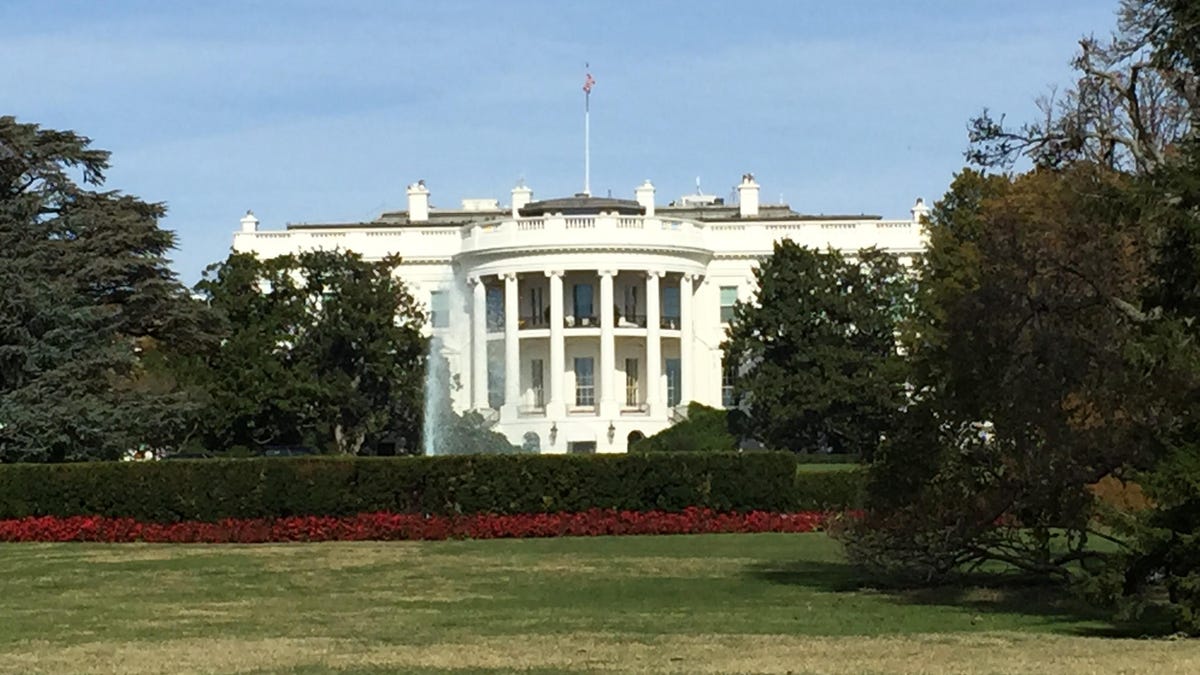Trump administration announces 2021 midband spectrum auction for 5G
The White House and Defense Department have a plan to free up 100 megahertz of midband spectrum for 5G.

The White House has a plan to free up more federally used midband spectrum for auction in 2021.
The White House and the Department of Defense on Monday announced a plan to free up 100 megahertz of wireless spectrum currently being used for the military to be used instead for commercial 5G service. This nationwide spectrum is in the so-called midband range of spectrum, which wireless providers say is key to delivering the next generation of 5G wireless service to suburban and rural users.
The Trump administration said it began working with the Defense Department in April to identify 100 MHz of contiguous wireless spectrum across the US that could be shared among military and commercial users. The spectrum is in the 3450 and 3550 MHz range of spectrum. The government says it plans to have the technical details of how to share the spectrum among the various stakeholders worked out by the end of the summer.
Then, the Federal Communications Commission would begin the process of drafting rules and seeking public comment for the auction of the spectrum. The auction is likely to take place in December 2021, with the expectation that the spectrum could be put to use by commercial entities starting in the summer of 2022.
The spectrum being targeted is currently being used by the military for high powered defense radar systems. These systems include air defense missiles and gun fire control for battlefield weaponry, as well as for air traffic control of weapons systems.
5G is the next generation of wireless technology rolling out across the world, promising to deliver much faster wireless service and a more responsive network. It's ability to connect more devices and offer real-time feedback is expected to spark a sea change in how we live and work, ushering in new advances like self-driving cars and advanced augmented reality experiences.
Midband spectrum, which is in the 2.5 gigahertz and 3.5 GHz range of frequencies, provides more balanced coverage and capacity due to its ability to cover a several-mile radius with 5G, despite needing more cell sites than lower-tiered spectrum bands.
AT&T and Verizon didn't initially focus on these spectrum bands for 5G and instead invested in millimeter wave spectrum -- extremely high-frequency radio airwaves that offer essentially a souped-up Wi-Fi hotspot.
Some critics fault the FCC for not moving quickly enough to get new licenses of midband spectrum for 5G into the US market. The agency is just now holding its first auction on midband spectrum for 5G in the 3.5 GHz band, which started on July 23, even as many countries in Europe have embraced midband spectrum.
On a call with reporters, representatives from the White House and the Defense Department noted the "unprecedented" speed with which the federal spectrum has been identified for use and technical issues around sharing the spectrum have been identified.
One official said similar efforts with other federal wireless spectrum have taken six to eight years to come to market. By contrast, this effort is expected to take 18 months to get federal spectrum auctioned off and in the hands of commercial entities. An official said this was the fastest possible deployment of the spectrum for commercial use, given the statute mandating how federal spectrum can be reallocated or shared with commercial entities.

